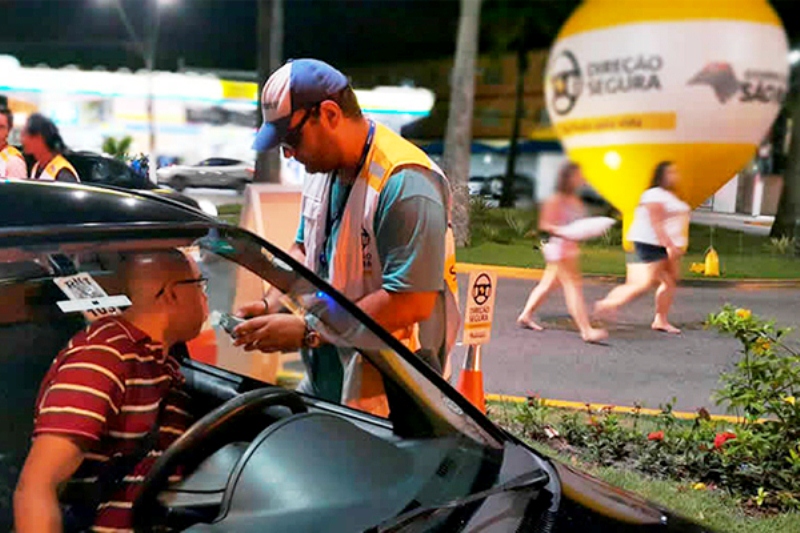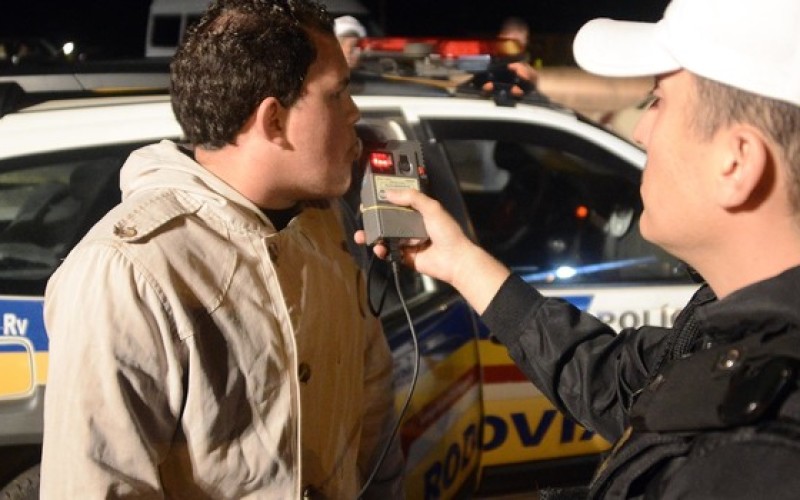SÃO PAULO, BRAZIL – The Traffic Police Command (CPTran) of the São Paulo State Police charged 16,680 drivers for disrespecting the ‘Lei Seca‘ (“Dry Law”, which prohibits any amount of alcohol consumption prior to driving) between January and August of this year in the city of São Paulo, according to exclusive data of the corporation obtained by GloboNews. The number represents an increase of 33 % in comparison to the 12,523 fines recorded in the same period in 2018.

According to CPTran figures, there was an average of 69 flagrant drivers driving under the influence of alcohol or another drug every day during the first eight months of this year. The total number of notifications made in road traffic operations for the Dry Law corresponds to the sum of two types of infractions: flagrant ones made with the help of a breathalyzer and cases of drivers who refuse to take this test.
Most of the 16,680 fines this year were for refusing to take the breathalyzer test (15,406), while the rest (1,274) had their alcohol levels checked by the ‘ethylometer’ (another name given to the device that measures alcoholic dosage in the driver’s body); 171 drivers were arrested for the crime of DUI (driving under the influence) in the period.
Prison sentences happen when the breathalyzer shows rates equal to or higher than 0.34 milligrams per liter of air expelled.
In the evaluation of the sub-commander of the 2nd Traffic Police Battalion, Major Marcos Cunha, the increase in flagrant abuse is due to a combination of factors, such as the acquisition by the State Police of new equipment used in the road traffic operations, which, when blown by the driver, indicates the presence of alcohol molecules. From this, the driver is submitted to a breathalyzer test, a stage in which the level of intoxication is ascertained.
“With this equipment, we selected better and, with a number of similar operations, we were able to submit many more drivers to the breathalyzer than we did up until last year”, explains Cunha. Still, according to him, there is a large number of drivers who drive under the influence of alcohol in the city of São Paulo.
Legal changes
Over the past few years, a number of laws have increased the strictness of Dry Law across the country. Federal Law No. 13,281, which came into force in November 2016, increased the fine imposed on drivers caught driving under the influence of alcohol or other drugs by 53%, from R$1,915.40 (US$479) to R$2,934.70.

The same law also included article 165-A in the Brazilian Traffic Code, which provides for punishments for drivers who refuse to take a breathalyzer test. Until then, the police found it difficult to produce evidence against the driver who refused to blow into the device that detects intoxication rates.
In 2012, the entry into force of Federal Law 12,760 defined that signs of drunkenness detected by the police in road traffic operations would be valid as alternative evidence to the index indicated by the breathalyzer test.
With the subsequent regulation made by the resolution of the National Traffic Council (Contran), redness in the eyes, a disorder of clothing, and odor of alcohol on the breath, for example, when combined, serve as evidence for the police to characterize a flagrant violation or even traffic crime.
Source: Agência Brasil

